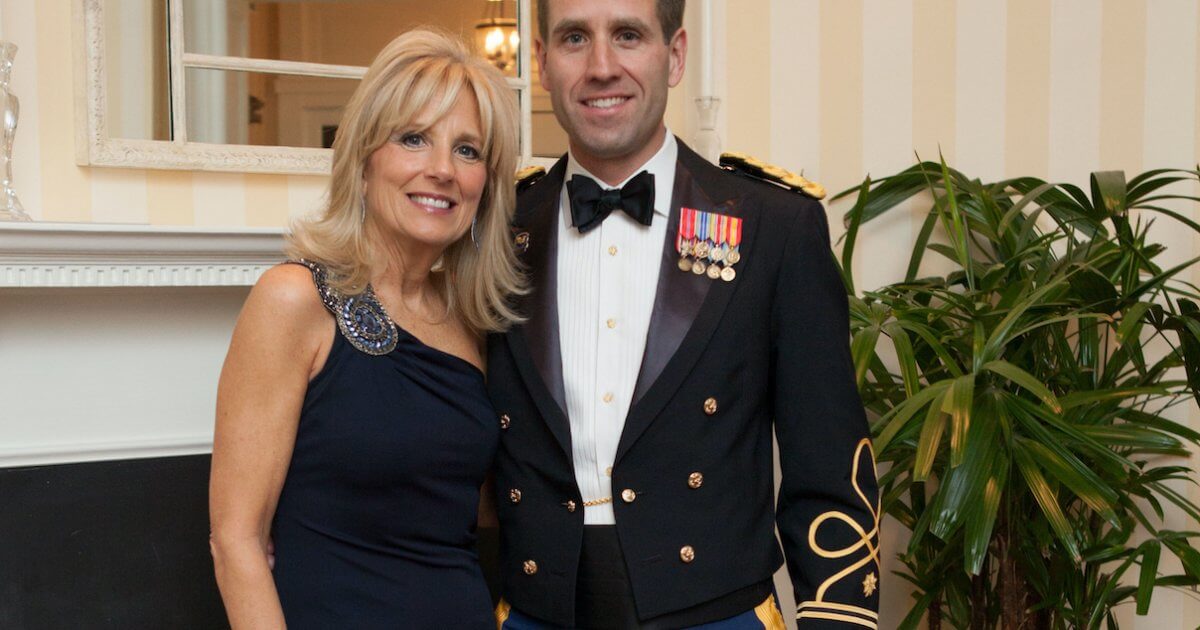Remembering Beau Biden
- President Joe Biden’s oldest son, Beau Biden, passed away 6 years ago at the age of 46 to brain cancer.
- Beau Biden was diagnosed with glioblastoma, an aggressive cancer that can occur in the brain or spinal cord, in 2013.
- Treatment options for brain cancer, specifically, glioblastoma have been advancing in the last decade, including the use of Optune, which uses tumor treating fields technology to disrupt the division of cancer cells.
Losing a child is an unimaginable event for any parent. President Joe Biden and his family went through the unthinkable when their oldest son, Beau Biden, passed away 6 years ago from brain cancer at the age of 46. Biden served two terms as attorney general for Delaware and he joined the Delaware Army National Guard in 2003, where he served as a major. He served one year in Iraq, from 2008 to 2009, on deployment with the Guard.
Beau Biden's Battle With Brain Cancer
Read MoreA crowd of more than 1,000 people packed St. Anthony of Padua’s Catholic Church in Wilmington to pay their respects, including former President Barack Obama who delivered an emotional eulogy.
At the funeral, Joe Biden held hands with his son's widow, Hallie Biden, and granddaughter, Natalie, as six pallbearers wheeled the coffin into the church, according to AP News.
Understanding Brain Cancer
There are many different types of brain cancer, some of which are more likely to spread into nearby parts of the brain or spinal cord than others. Slow-growing tumors may be considered benign (non-cancerous), but even these tumors can cause serious problems.
According to the American Cancer Society, about 24,530 malignant tumors of the brain or spinal cord (13,840 in males and 10,690 in females) will be diagnosed. Additionally, about 18,600 people (10,500 males and 8,100 females) will die from brain and spinal cord tumors.
One type of brain tumor, for example, is a glioblastoma (GBM). It is the most aggressive primary brain tumor, but researchers have been making some big advances in treatment for GBM.
Despite the aggressive nature of GBM, Dr. Henry Friedman, the top brain researcher in the U.S. and a neuro-oncologist at Duke University Medical Center, tells SurvivorNet that, "You are not dead just because you're diagnosed with a glioblastoma. So many people are told by their doctors or their institutions that they're at, 'I'm sorry, put your affairs in order and just move on.'"
Dr. Friedman and his Duke colleagues are investigating a new therapy that combines the modified poliovirus and immunotherapy. "The modified poliovirus is used to treat this tumor, by injecting it directly into the tumor, through a catheter. It is designed to lyse the tumor and cause the tumor cells to basically break up" he says.
"I think that the modified poliovirus is going to be a game-changer in glioblastoma," explains Dr. Friedman.
When discussing the success of the poliovirus study, Dr. Friedman tells SurvivorNet, "It has helped a large number of patients, but not enough. We have a prolonged survival curve of about 18% going out many, many years in our initial trial. We don't want to have 18%, 15%, 20% of people who are long-term survivors. We want them to be at a much higher number."
Dr. Friedman and his colleagues are now taking this a step further by combining this treatment with a type of immunotherapy, called a checkpoint inhibitor. Specifically, the Duke team is using a drug called pembrolizumab (Keytruda) and is coupling it with the modified poliovirus. By combining these therapies the study team hopes the GBM patient's own immune system will be better equipped to attack and kill the cancer cells. While this is exciting, and certainly a point of hope for patients with GBM, this combination therapy needs to be tested in a clinical trial setting before it can be used to treat all patients with GBM.
Progress In Glioblastoma
Optune is a promising advancement in treating brain tumors. At the moment, the projected life expectancy of someone battling glioblastoma is two years, but some patients undergoing Optune have seen the median survival rate extend.
Approved by the Food and Drug Administration (FDA) in 2015, Optune works by disrupting the division of cancer cells in tumors and delaying the progression of the cancer in some patients. Treatments such as Optune are often referred to as tumor-treating fields. This, in combination with standard treatment, could add two years to the median survival rate for glioblastoma in about half of patients who use it, and five years of additional life for about a third of patients.
"There's been the very exciting development of tumor treating fields, which are electrical fields that have been applied to the brain," Dr. Suriya Jeyapalan, a neurologist at Tufts Medical Center, tells SurvivorNet. "They're basically these adhesive pads, front and back, right and left. They're connected to a device that now weighs about 2 and 1/2 pounds. It generates this alternating electric current that has been shown in a major randomized controlled trial to add on another 50% of survival at two years."
Learn more about SurvivorNet's rigorous medical review process.


